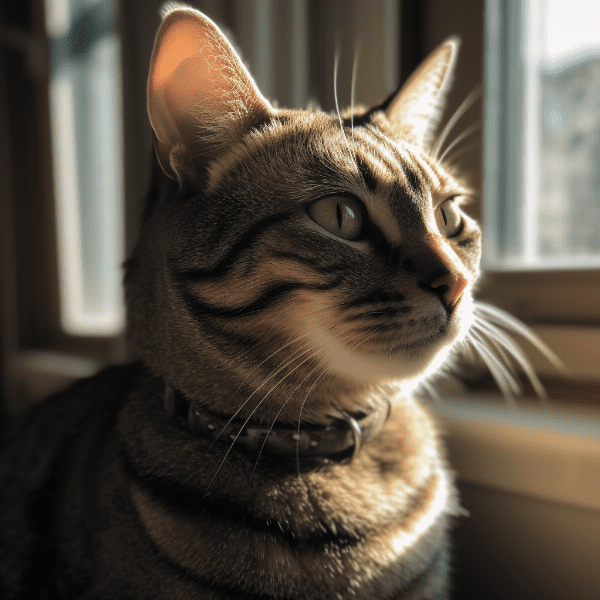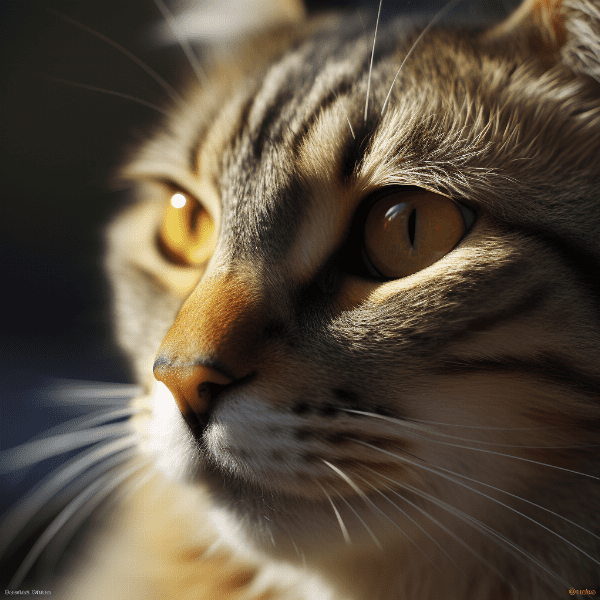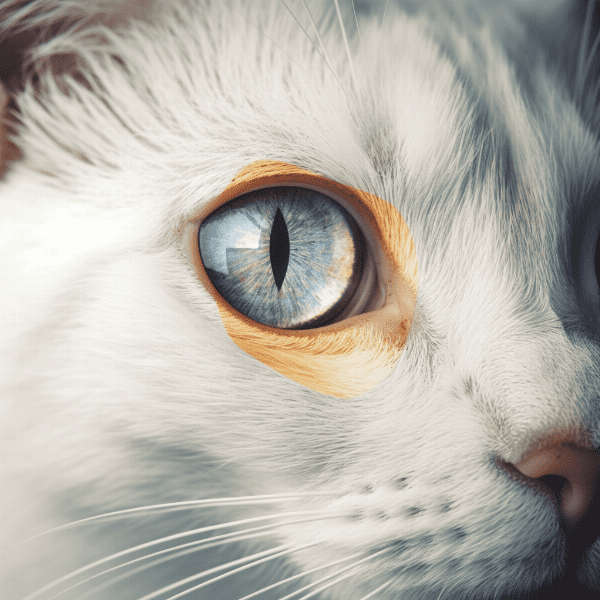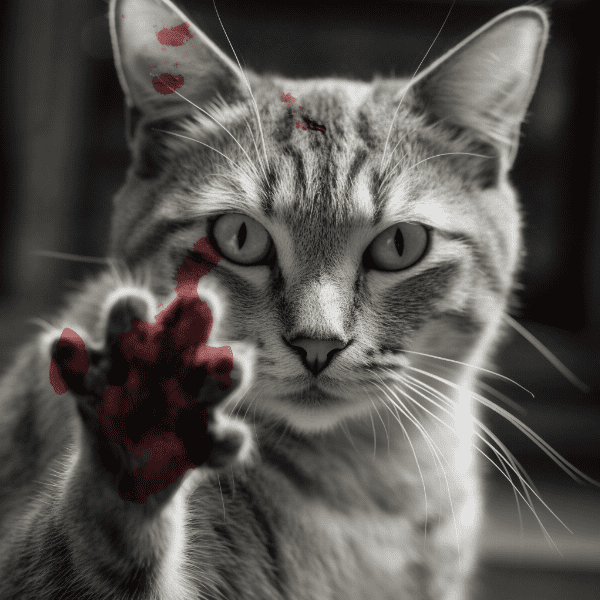Table of Contents
- Introduction to Feline Conjunctivitis
- Understanding the Anatomy of a Cat’s Eye
- Causes of Feline Conjunctivitis
- Symptoms of Feline Conjunctivitis
- Diagnosing Feline Conjunctivitis
- Treatment Options for Feline Conjunctivitis
- Preventing Feline Conjunctivitis
- When to Seek Veterinary Care
- Living with a Cat with Conjunctivitis
- Conclusion: Caring for Your Cat’s Eye Health
Introduction to Feline Conjunctivitis
Cats are one of the most beloved pets in the world. They are known for their playful, curious, and affectionate nature. However, just like any other living being, cats are also susceptible to various health issues. One of the common health problems that cats may face is feline conjunctivitis.
Feline conjunctivitis is an inflammation of the conjunctiva, which is a thin, transparent membrane that covers the inner surface of the eyelids and the white part of the eye. This condition can affect cats of all ages and breeds, and it can be caused by various factors, including bacterial or viral infections, allergies, trauma, and underlying health issues.
Understanding the Anatomy of a Cat’s Eye
To better understand feline conjunctivitis, it is essential to know the basic anatomy of a cat’s eye. A cat’s eye has several components that work together to provide vision. The outermost layer of the eye is the cornea, which is a clear, dome-shaped structure that protects the eye and helps focus light. Behind the cornea is the iris, which is the colored part of the eye that controls the amount of light that enters the eye. The pupil is the black circular opening in the center of the iris, and it expands and contracts to adjust the amount of light entering the eye.
The lens is a clear structure behind the iris that helps to focus light onto the retina, which is a thin layer of tissue at the back of the eye that contains photoreceptor cells. These cells convert light into electrical signals that are sent to the brain via the optic nerve, allowing the cat to see.
Causes of Feline Conjunctivitis
Feline conjunctivitis can be caused by various factors, including bacterial or viral infections, allergies, trauma, and underlying health issues. Bacterial conjunctivitis is usually caused by a bacterial infection, and it can lead to symptoms such as redness, discharge, and swelling of the eye. Viral conjunctivitis is caused by a virus, and it can cause symptoms such as redness, discharge, and watery eyes.
Allergic conjunctivitis is caused by an allergic reaction to substances such as dust, pollen, or food, and it can cause symptoms such as redness, itchiness, and swelling of the eye. Trauma-related conjunctivitis can occur due to physical injury to the eye, such as scratches, foreign objects, or exposure to irritants. Finally, underlying health issues such as feline herpesvirus, feline immunodeficiency virus (FIV), or feline leukemia virus (FeLV) can also cause conjunctivitis in cats.
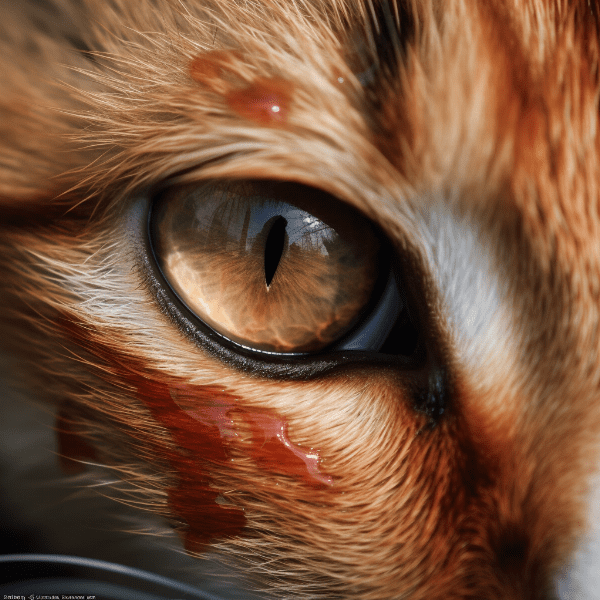
Understanding the Anatomy of a Cat’s Eye
As we have discussed earlier, a cat’s eye is a complex structure that is responsible for providing vision. Understanding the basic anatomy of a cat’s eye can help cat owners better appreciate their pets’ vision and detect any potential problems that may arise.
The Cornea
The cornea is the outermost layer of the eye and is the first structure that light passes through when entering the eye. It is composed of several layers of cells that help to protect the eye from damage and infection. The cornea is also responsible for focusing light onto the lens, which is the next structure that light passes through.
The Iris and Pupil
The iris is the colored part of the eye that surrounds the pupil. The pupil is a black circular opening in the center of the iris that controls the amount of light that enters the eye. In bright light, the pupil contracts to limit the amount of light entering the eye, while in dim light, the pupil dilates to allow more light to enter.
The Lens
The lens is a clear structure located behind the iris and is responsible for focusing light onto the retina. It is composed of layers of cells that are arranged like an onion, with the outermost layers being the oldest and the innermost layers being the youngest. The lens changes shape to adjust the focus of light, allowing objects at different distances to be seen clearly.
The Retina
The retina is a thin layer of tissue located at the back of the eye that contains photoreceptor cells. These cells are responsible for converting light into electrical signals that are sent to the brain via the optic nerve, where they are processed into visual images. The retina contains two types of photoreceptor cells, rods, and cones, which are responsible for detecting light in low light conditions and bright light conditions, respectively.
The Optic Nerve
The optic nerve is a bundle of nerve fibers that carries the electrical signals generated by the photoreceptor cells in the retina to the brain. The brain then processes these signals into visual images that we can see. Any damage or impairment to the optic nerve can result in vision loss or blindness.
Understanding the basic anatomy of a cat’s eye can help cat owners appreciate the complexity of this organ and the importance of maintaining good eye health. In the next section, we will discuss the various causes of feline conjunctivitis, which can affect any part of the eye and cause discomfort for our feline friends.

Causes of Feline Conjunctivitis
Feline conjunctivitis can be caused by a variety of factors, ranging from bacterial or viral infections to allergies and underlying health issues.
Bacterial and Viral Infections
Bacterial conjunctivitis is usually caused by bacteria such as Staphylococcus or Streptococcus, and it can be transmitted from cat to cat through direct contact or through contaminated objects such as food bowls or bedding. Viral conjunctivitis, on the other hand, is caused by viruses such as feline herpesvirus or calicivirus, which can be transmitted through direct contact or airborne droplets.
Allergies
Allergic conjunctivitis can be caused by an allergic reaction to substances such as dust, pollen, or certain foods. Cats can develop allergies at any age, and the symptoms can range from mild to severe. The conjunctiva becomes inflamed and swollen, causing discomfort and irritation.
Trauma and Irritants
Conjunctivitis can also be caused by physical injury to the eye, such as scratches, foreign objects, or exposure to irritants like chemicals or smoke. Trauma to the eye can cause the conjunctiva to become inflamed and irritated, leading to conjunctivitis.
.
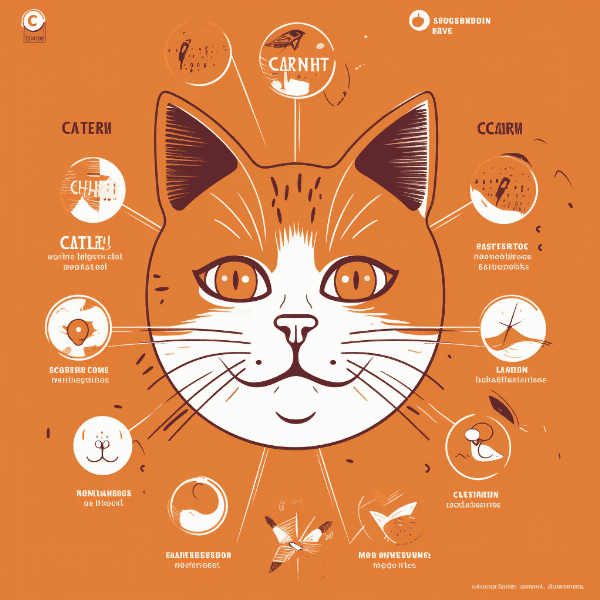
Symptoms of Feline Conjunctivitis
Feline conjunctivitis can cause a variety of symptoms that can vary in severity and duration. Early detection of these symptoms can help cat owners seek timely treatment and prevent the condition from progressing.
Redness and Swelling
One of the most common symptoms of feline conjunctivitis is redness and swelling of the eye. The conjunctiva becomes inflamed and swollen, making the eye appear red and puffy.
Discharge
Feline conjunctivitis can also cause discharge from the eye, which can range from clear to yellow or green in color. The discharge can be watery or thick and sticky, and may crust over around the eye.
Squinting and Blinking
Cats with conjunctivitis may also squint or blink excessively, as the inflammation and discharge can cause discomfort and irritation.
Cloudy or Hazy Appearance
In severe cases of conjunctivitis, the eye may appear cloudy or hazy, as the inflammation can affect the cornea and the lens. This can affect the cat’s vision and cause discomfort.
.
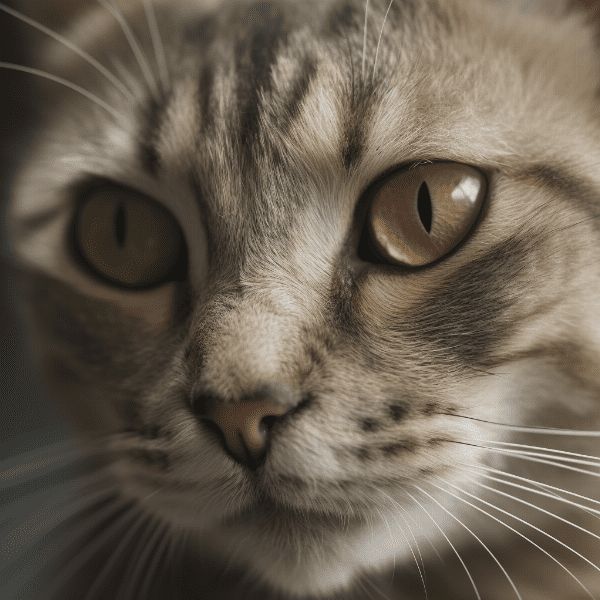
Diagnosing Feline Conjunctivitis
To diagnose feline conjunctivitis, a veterinarian will perform a comprehensive eye examination and may use additional diagnostic tools to identify the underlying cause of the condition.
Eye Examination
During the eye examination, the veterinarian will examine the eye for signs of redness, swelling, discharge, and cloudiness. They may also perform a fluorescein stain test to check for corneal abrasions or ulcers, which can be a complication of conjunctivitis. The veterinarian may also examine the cat’s eyelids, tear ducts, and surrounding areas for any signs of infection or inflammation.
Additional Diagnostic Tests
If the cause of conjunctivitis is not immediately clear, the veterinarian may perform additional diagnostic tests to identify the underlying cause of the condition. These tests may include:
- Culture and Sensitivity Test: This test involves taking a sample of the discharge from the eye and testing it for bacterial or fungal infection. The test can also identify which antibiotics or antifungal medications will be most effective in treating the infection.
- Blood Tests: Blood tests can help identify underlying health issues, such as feline herpesvirus, feline immunodeficiency virus (FIV), or feline leukemia virus (FeLV).
- Allergy Testing: If the veterinarian suspects that the conjunctivitis is caused by allergies, they may perform allergy testing to identify the allergen that is causing the reaction.
- Imaging Tests: In some cases, the veterinarian may perform imaging tests such as X-rays or ultrasound to identify any structural abnormalities or foreign objects in the eye.
Treatment Options
Once the underlying cause of conjunctivitis has been identified, the veterinarian will develop a treatment plan tailored to the cat’s individual needs. Treatment options may include antibiotics or antifungal medications, topical or oral medications to reduce inflammation, or surgery to remove foreign objects or repair any structural abnormalities.
In the next section, we will discuss the various treatment options for feline conjunctivitis and how cat owners can help prevent this condition in their pets.
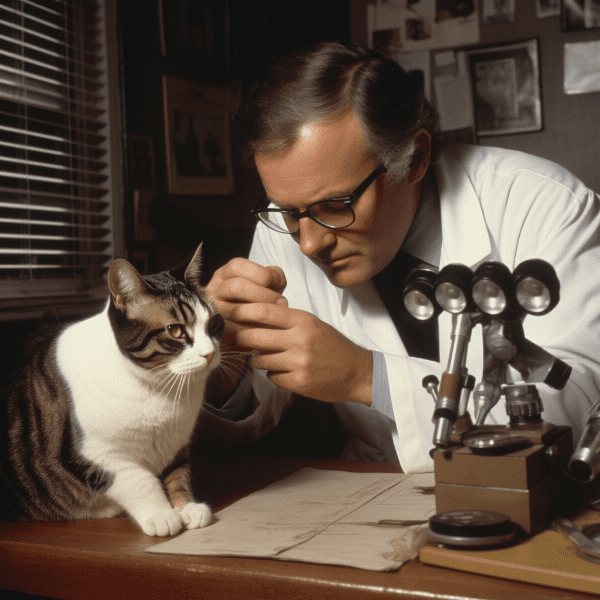
Treatment Options for Feline Conjunctivitis
Treatment for feline conjunctivitis depends on the underlying cause of the condition. Once a diagnosis has been made, a veterinarian will develop a treatment plan tailored to the cat’s individual needs.
Antibiotics and Antifungal Medications
If the conjunctivitis is caused by a bacterial or fungal infection, the veterinarian may prescribe antibiotics or antifungal medications. These medications can be given orally, topically, or injected, depending on the severity of the infection. It is important to follow the veterinarian’s instructions carefully when administering these medications, as improper use can lead to antibiotic resistance or other complications.
Anti-inflammatory Medications
To reduce inflammation and relieve discomfort, the veterinarian may prescribe anti-inflammatory medications, such as corticosteroids. These medications can be given orally or topically, and they can help reduce redness, swelling, and discharge from the eye. It is important to follow the veterinarian’s instructions carefully when administering these medications, as long-term use can lead to side effects such as weight gain, increased thirst, and increased susceptibility to infections.
Surgery
In severe cases of conjunctivitis, surgery may be necessary to remove foreign objects or repair any structural abnormalities in the eye. This is typically a last resort and is only recommended when all other treatment options have been exhausted.
Preventing Feline Conjunctivitis
To help prevent feline conjunctivitis, it is important to maintain good eye hygiene and take steps to minimize the risk of infection or injury. This can include:
- Cleaning the cat’s eyes regularly with a damp cloth or cotton ball to remove any discharge or debris.
- Keeping the cat’s living area clean and free from dust, dirt, and other irritants.
- Avoiding exposure to other sick or infected cats.
- Keeping the cat’s vaccinations up to date to prevent infections such as feline herpesvirus or calicivirus.
- Providing a balanced diet and regular exercise to maintain good overall health and immunity.
By taking these steps, cat owners can help prevent feline conjunctivitis and ensure their pets remain healthy and happy.
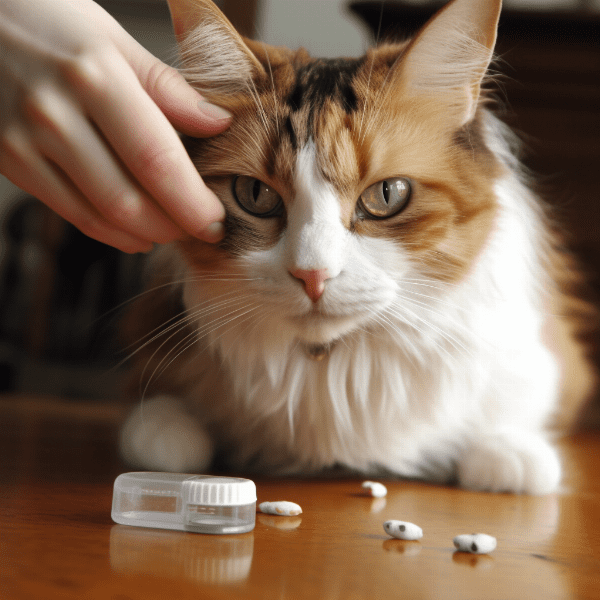
Preventing Feline Conjunctivitis
Preventing feline conjunctivitis involves taking steps to minimize the risk of infection or injury to the eye. Here are some ways to help prevent feline conjunctivitis:
Keep Living Area Clean
Keeping the cat’s living area clean and free from dust, dirt, and other irritants can help reduce the risk of conjunctivitis caused by allergies or irritants. This can include vacuuming regularly, washing bedding and toys, and keeping litter boxes clean.
Minimize Exposure to Sick or Infected Cats
Avoiding exposure to sick or infected cats can help prevent the spread of bacterial or viral infections that can cause conjunctivitis. If the cat is frequently around other cats, it is important to ensure that all cats are up to date on their vaccinations and to practice good hygiene, such as washing hands before and after handling cats.
Vaccinations
Keeping the cat’s vaccinations up to date can help prevent infections such as feline herpesvirus or calicivirus, which can cause conjunctivitis. It is important to discuss vaccination schedules with a veterinarian and ensure that the cat receives all recommended vaccinations.
Provide a Balanced Diet and Regular Exercise
Maintaining good overall health and immunity can help prevent feline conjunctivitis. Providing a balanced diet and regular exercise can help keep the cat’s immune system strong and reduce the risk of infections and other health issues.
By taking these steps, cat owners can help prevent feline conjunctivitis and ensure their pets remain healthy and happy. If a cat owner suspects their pet has conjunctivitis, it is important to seek veterinary care as soon as possible to prevent the condition from progressing.
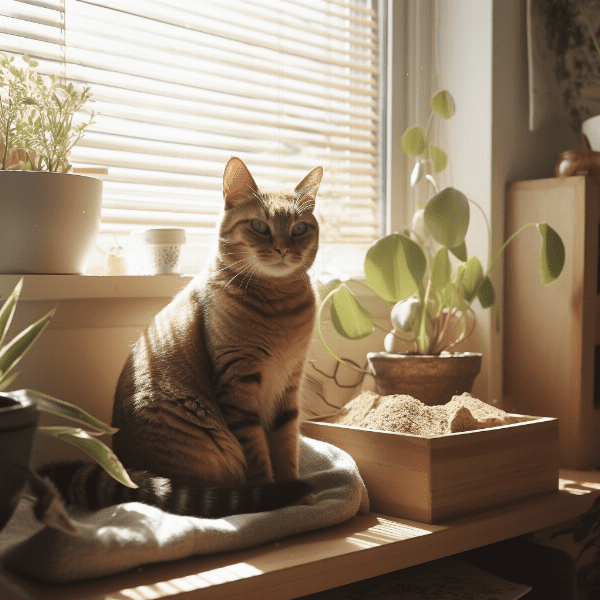
When to Seek Veterinary Care
If a cat owner suspects their pet has conjunctivitis, it is important to seek veterinary care as soon as possible. Here are some signs that indicate it’s time to take the cat to the veterinarian:
Persistent Symptoms
If the cat has persistent symptoms of conjunctivitis, such as redness, discharge, or swelling, it is important to seek veterinary care. These symptoms can indicate a bacterial or viral infection, which requires prompt treatment to prevent the condition from worsening.
Changes in Behavior
If the cat is exhibiting changes in behavior, such as decreased appetite, lethargy, or hiding, it may indicate that the cat is experiencing discomfort and pain. This is a sign that it’s time to seek veterinary care.
Corneal Abrasions or Ulcers
If the veterinarian suspects that the cat has a corneal abrasion or ulcer, it is important to seek veterinary care as soon as possible. These conditions can be a complication of conjunctivitis and can cause vision loss or even blindness if left untreated.
Underlying Health Issues
If the cat has underlying health issues, such as feline herpesvirus, feline immunodeficiency virus (FIV), or feline leukemia virus (FeLV), it is important to seek veterinary care if conjunctivitis develops. These conditions weaken the cat’s immune system, making them more susceptible to infections and other health problems.
In general, if the cat’s symptoms are severe or persist for more than a few days, it is important to seek veterinary care. Early detection and treatment of conjunctivitis can help prevent the condition from progressing and improve the cat’s quality of life.

Living with a Cat with Conjunctivitis
Living with a cat with conjunctivitis can be challenging, but with proper care and treatment, most cats can recover from this condition. Here are some tips for living with a cat with conjunctivitis:
Administer Medications as Directed
It is important to follow the veterinarian’s instructions carefully when administering medications to a cat with conjunctivitis. This may include administering medications orally, topically, or through injection. It is important to administer the medication on schedule and to complete the full course of treatment, even if the cat’s symptoms improve.
Monitor Symptoms
It is important to monitor the cat’s symptoms and behavior closely when they have conjunctivitis. This can help identify any changes in the condition and ensure that the cat is responding to treatment. If the cat’s symptoms worsen or do not improve after a few days of treatment, it is important to contact the veterinarian for further advice.
Maintain Good Eye Hygiene
Regularly cleaning the cat’s eyes with a damp cloth or cotton ball can help prevent the buildup of discharge and debris that can lead to infections. It is important to use a separate cloth or cotton ball for each eye to prevent the spread of infection. If the cat has excessive discharge or crustiness around the eyes, the veterinarian may recommend a warm compress to help clean the area.
Minimize Stress
Stress can weaken a cat’s immune system and make them more susceptible to infections and other health problems. It is important to minimize stress for cats with conjunctivitis by providing a calm and comfortable environment, with plenty of hiding places and opportunities for rest and relaxation.
Follow Up with Veterinary Care
After the initial treatment for conjunctivitis, it is important to follow up with regular veterinary care to monitor the cat’s condition and ensure that they remain healthy. This may include regular check-ups, vaccinations, and monitoring for any underlying health issues that may contribute to conjunctivitis.
By following these tips, cat owners can help their pets recover from conjunctivitis and prevent the condition from recurring. If the cat owner has any questions or concerns about their cat’s condition, they should not hesitate to contact their veterinarian for further advice.
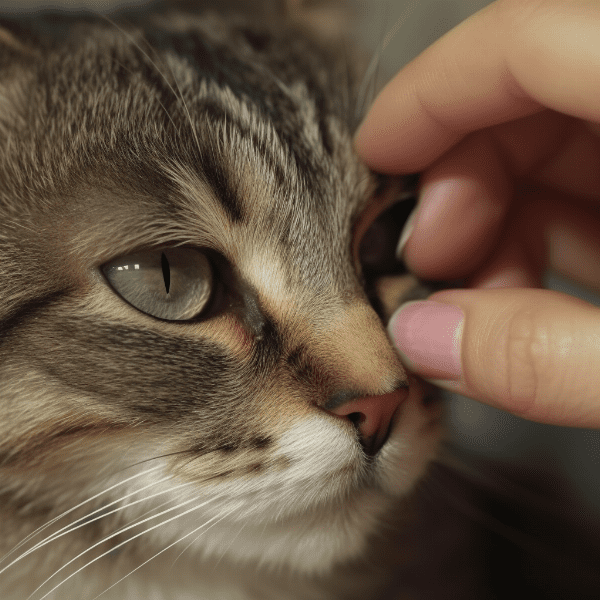
Conclusion: Caring for Your Cat’s Eye Health
Feline conjunctivitis is a common condition that can be caused by a variety of factors. By understanding the causes, symptoms, and treatment options for conjunctivitis, cat owners can take steps to prevent the condition and seek timely veterinary care if their pet develops conjunctivitis.
To care for your cat’s eye health, it is important to maintain good eye hygiene, keep their living area clean and free from irritants, minimize exposure to sick or infected cats, keep their vaccinations up to date, and provide a balanced diet and regular exercise. It is also important to seek veterinary care if you suspect your cat has conjunctivitis, as early detection and treatment can help prevent the condition from worsening.
Living with a cat with conjunctivitis can be challenging, but with proper care and treatment, most cats can recover from this condition. Administering medications as directed, monitoring symptoms closely, maintaining good eye hygiene, minimizing stress, and following up with regular veterinary care are all important steps to help your cat recover from conjunctivitis and maintain good eye health.
By following these tips and working closely with your veterinarian, you can help ensure that your cat’s eyes remain healthy and that they live a happy and comfortable life.
